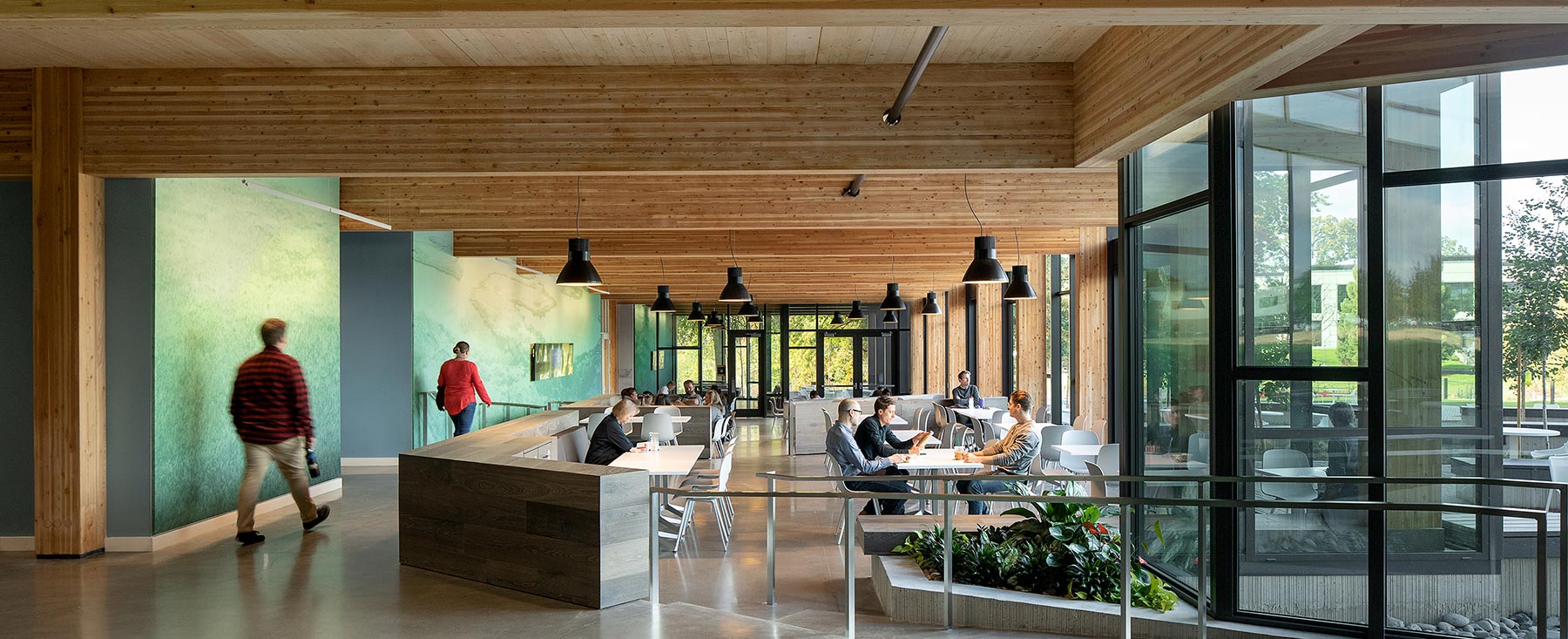The timber trend is beginning to gain traction as a potential change agent in sustainable building design – particularly in forest-heavy areas of the country like the Pacific Northwest. And it’s due in large part to the increasing availability of Cross Laminated Timber (CLT). CLT is a prefabricated material consisting of sustainably-sourced lumber layered in opposing directions and held together with low-VOC adhesives. The result is a powerful load-bearing material that is proving its mettle as a competitor to steel and concrete.
It’s causing many MEP engineers and sustainable building design professionals to come around to the idea that wood structures are a realistic sustainable approach. But what are the environmental benefits? According to a recent article in The Architect’s Newspaper, utilizing timber as a structural material reduces the associated carbon emissions of a building in three ways:
- Wood is a renewable resource with a lower extraction and processing impact than steel and concrete.
- Because it’s a profoundly available domestic resource, the embodied carbon in timber is significantly lower than that of steel or concrete, which more and more involve importing materials by ship from other parts of the world.
- The more wood we harvest, the more we can replant, increasing the land’s carbon sequestration capacity.
This final point may seem a little counter-intuitive, but substantial research is being done on the subject of a monitored increase in timber harvesting. It begins to make more sense when we learn that much of the wood harvested to make CLT is Mountain Pine Beetle kill trees – essentially trees that are dying due to a natural beetle infestation process and are beginning to decay and release more carbon into the air, rather than absorb it.
Coupled with emerging trend of mass timber structures is the interior design concept of exposing all building services (ductwork, chilled sails, fire protection piping, etc.). This idea has branched out of tech office space into a mainstream approach of designing a more industrial and functional indoor experience. By removing dropped ceilings, interiors feel more spacious. And exposing the wood structure creates an aesthetically pleasing and natural environment, as opposed to the more traditional concrete or steel.
Healthy Building Design is Sustainable Building Design
There are a number of ways these trends promote sustainability in modern work spaces. Our MEP engineering experts are continuing to investigate and learn the benefits of design approaches that value the health and well-being of the occupant. Pulling from the knowledge found in the WELL Building Standard, there are three relevant concepts that can contribute to the overall performance of a building:
- Beauty and Design
- Biophilia
- Material Transparency
According to the WELL standard, “integrating aesthetically pleasing elements into a space can help building occupants derive a measure of comfort or joy from their surroundings.” Presenteeism – the idea that while staff are present, they are often disengaged from work — is a major issue in office spaces. Thoughtful design and the use of natural materials can help combat this.
To learn how our MEP Engineering experts approach WELL Building certification, check out our
case study on Healthy Building Design
Biophilia addresses our affinity to the natural world, and through incorporating environmental elements and natural patterns, interior spaces can “help to speed up healing and recovery time, boost positive feelings and reduce negative ones.” This is of particular use in healthcare facilities, where biophilic design has demonstrated improved speed of patient recovery and leading to more availability for new patient intake, and office environments, where it has shown a reduction in lost time from staff fatigue.
Material transparency is the concept that we as building occupants should know what our buildings are made of, including the myriad of chemicals that are constituents of seemingly harmless components. With wood, the only component we need to be aware of is adhesives used to create cross laminated timber and glu-lam products. There are environmentally sound products for this application.
Sustainable sourcing combined with thoughtful interior design can lead to gains in productivity and energy efficiency. Our MEP engineering experts are continuing to investigate the sustainable building design benefits of timber and are already integrating it into commercial projects. As we move closer to a future of net-zero and net-positive design, the inclusion of natural material will prove critical.

